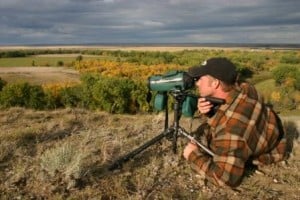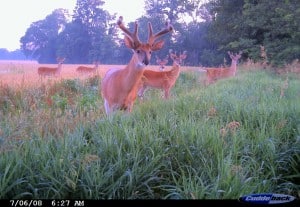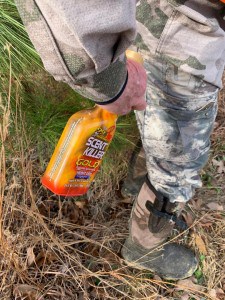Years ago, an Ohio bowhunter by the name of Chad Moore wrote and told me about the dream buck he had just shot. The tale of the tape was impressive: the 6½-year-old 9-pointer with the drop tine and beams like Red Bull cans at the bases scored 186 non-typical. The story of his hunt was pretty simple and straightforward.
Chad didn’t use a big or flashy technique to kill the giant. He just did a lot of good things right: the scouting, the trail-cams, the tree-stand placement, the scent control… He kept at it day after day, until the monster popped up in his bow sight one afternoon. Then, heart thumping and knees shaking, he held it together and made the shot.
That is usually how it works. Most of the time, substance over style is how you get the brutes. So fit together these tips and tactics into one solid game plan tweaked to your land. Then, hunt hard and smart day after day. When you get your shot, be cool under pressure. The 2019 season, which is just around the corner, might be the season of your life.
Phase 1: Seeing is Believing
Forget the rut for now and focus on the early season, the second best time to shoot a whopper. Bucks have two weaknesses now. Singles, doubles and bachelor’s groups (generally a couple of small guys hanging out with a shooter or two) are still visible in open areas, and they are still locked into tight summer bed-to-feed patterns. Step one, find them; step two, pin down their travels so you can capitalize on those weaknesses.
It begins with having the right tools. If I had to choose between buying a new bow, gun or binoculars, I’d want them all, but I’d go with the glass. You need a full-size 10×42. Also, you can’t really count tines or gauge beam mass without a spotting scope on a tripod. A 20×50 or 20×60 model is the way to go.
On these sultry late summer evenings, drive out to your land an hour before dusk and glass a field of alfalfa, clover, wheat or cut corn from a good distance away. No crops on your land? No worries. On one of my Virginia places I glass a lot of does and bucks in fields that haven’t been planted for years. After those fields are hayed for the last time in late summer, deer hit them hard to feed on the new, green forbs that pop up, especially if we get some rain. You might also find your buck mingling in a clear-cut, or in a wide log road, in a power line right-of-way…you get the picture. Spend as many evenings on the job as you can. The more times you spot the same buck(s), the better.
Have you been committing the biggest scouting sin—not glassing in the mornings too?If so, grab a cup of Joe and get out there at sunrise this weekend. Watch deer walking edges and tree lines, cutting across swamps, slinking in ditches and the like as they make for their bedding areas back in the woods. This reveals another link in their routine.
Once you’ve glassed a stout 8- or 10-point a few times, look for the corner, ditch or chute in the tree line where he most often pops out into the feed or leaves it at sunrise. Mark these entry and exit points on an aerial photograph. You’re off to a great start.
Phase 2: Trail-Cam Tactics
One summer Iowa bowhunter Jay Gregory glassed a stud in the soybeans on several evenings. The buck was coming out of deep cover in a river bottom. Gregory sneaked in there and set a few cameras on the best trails he could find. Throughout September he got some awesome pictures. My Lord, that giant will score close to 200, he thought. One October day he got the shot he really wanted. The buck crossed the river near his bedding area in broad daylight at 8:00 am. Gregory moved in with a tree stand and killed him a short time later. He scored 198.
There are three morals to this story:
1) Late-summer visuals coupled with trail-camera photos take your scouting to the next level, and double your chances of patterning and shooting a monster.
2) “Once you spot an old buck in a field, sneak in and set cameras on trails in a nearby riverbed or creek bottom,” says Gregory. “As summer deepens, mature bucks spend a lot of time hanging out near water in low areas. If you get lucky and set your cams in the right spot, you can find out exactly where he’s bedding.”
3) Night pictures of bucks are cool, but once you snap a big boy on the prowl in early or afternoon shooting light, move in and hunt your best stand for the kill. Sometimes a titan will only move in good light for a few days each fall; a cam picture can help you be in the right spot at the right time.
Phase 3: The Ground Work
You still need to get out and do some good old ground pounding. How else can you set a stand or blind and expect that brute you’ve been glassing and photographing to walk within 25 yards of it?
Scout one day around lunchtime, when deer are bedded. Spray down with Scent Killer. Walk across a field or cutover to a tree line where you’ve watched a fat 8-pointer step out. Check the wind; it should blow out of the woods. Sneak 50 to 100 yards back into the wind and timber. Don’t go much deeper than that, or else you’ll bump deer. Some does and bucks loaf super-tight to the feed this time of year.
Back in there, look for this early sign:
Rubs: Big rubs start popping up around September 1. Soon after stripping their velvet, dominant bucks post mega rubs on aromatic pines or cedars, hardwoods or even fence posts to tell does and other males, “This spot is mine!” Find a cluster of arm-size rubs on a ridge or in a river bottom near a crop field and you’ve found some segment of a big deer’s core area—hunt there into October.
Droppings: Lots of fresh pellets or clumps in a thicket or swamp tell you animals are edding there. If they’re dry and light brown, look for the nearest cornfield or oak flat where the deer are feeding and plan an ambush. If the scat is moist and greenish-black, check a nearby clover or wheat plot or maybe an apple orchard. Also look for pellets beneath mast trees where deer feed.
Tracks: Lots of so-so tracks indicate a lot of deer. A deep, splayed, three-inch print tells you a heavy buck is with them (size of his rack, nobody knows). Look for buck tracks along the edge of a field or in a muddy creek or river crossing.
Beds: I sometimes carry a tape measure to check tracks and also beds. My field research says a full-grown buck’s bed in matted grass or leaves is roughly 45 to 50 inches long, while a doe or young buck’s is 40 inches or so. You can never get too much info.
You’ve got about 6 weeks to put this 3-phase plan to work before bow season, good luck!








